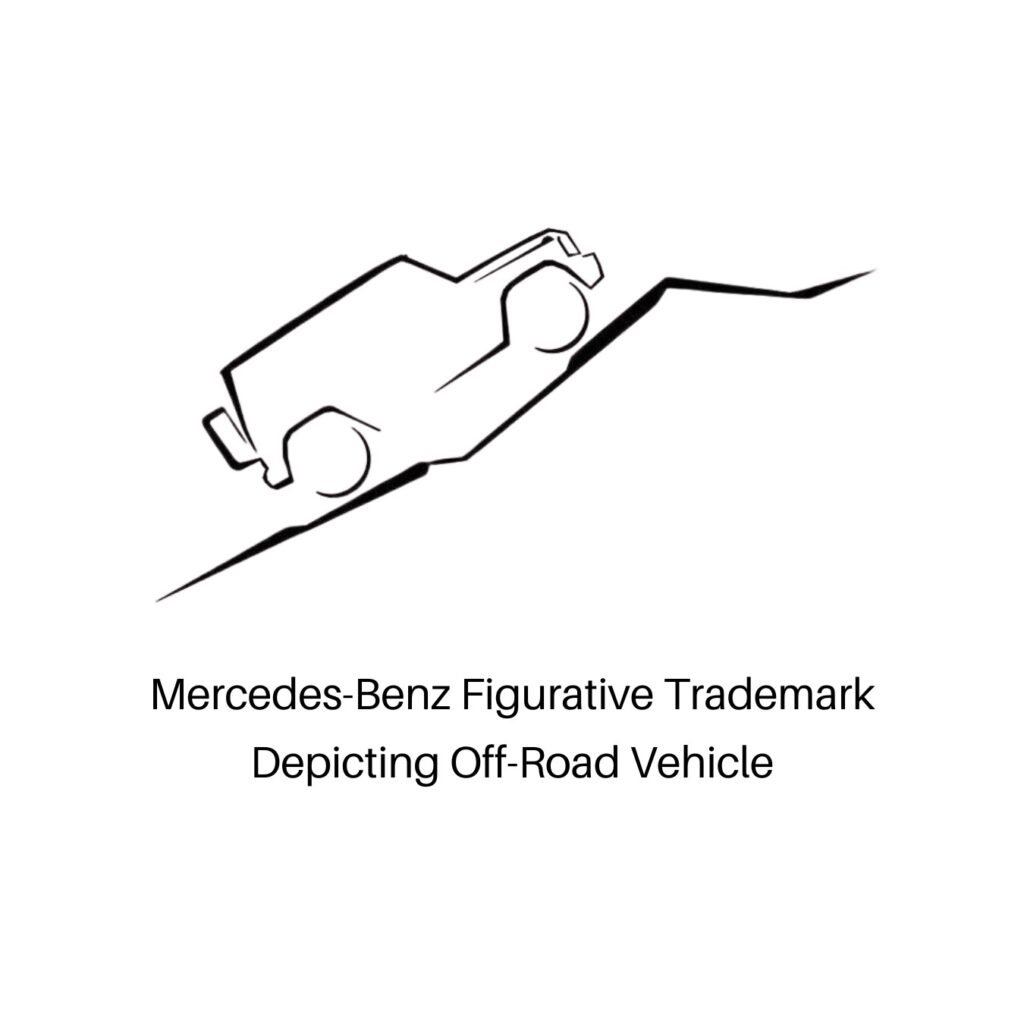On 19 March 2025, the General Court of the European Union ruled in Case T-400/24, rejecting Mercedes-Benz Group AG’s application to register a figurative trade mark representing an ascending off-road vehicle. The decision, based on Article 7(1)(b) of Regulation (EU) 2017/1001, confirmed that the mark lacked distinctive character and could not be registered.
Background to the Case
Mercedes-Benz had applied for a European Union trade mark on 6 December 2022 for a figurative sign depicting an off-road vehicle climbing a hill. The application covered goods in Class 12 of the Nice Classification, specifically motor vehicles and their parts, including tyres and wheels. The EUIPO examiner partially rejected the application on 28 September 2023, citing a lack of distinctive character. The Fifth Board of Appeal upheld this decision on 24 May 2024, leading Mercedes-Benz to challenge the ruling before the General Court.

The Court’s Assessment
The General Court assessed the case by considering:
- Whether the relevant public, composed of consumers across the European Union, would perceive the sign as an indication of the commercial origin of the goods.
- Whether the sign significantly departed from the norms and customs of the motor vehicle sector.
The Board of Appeal had determined that the figurative mark merely depicted an off-road vehicle in a typical driving scenario, illustrating common design features such as large tyres and a spare wheel mounted outside the rear window. It concluded that the sign would be perceived as a generic representation rather than as a distinctive identifier of origin.
Mercedes-Benz argued that the sign was an abstract and unique depiction of an off-road vehicle, setting it apart from standard industry symbols. However, the General Court found that the sketch-like representation did not sufficiently differentiate it from conventional illustrations used in the sector.
Legal Considerations
The Court reaffirmed the principle that a mark must possess at least minimal distinctive character to be eligible for registration. A sign that closely resembles the typical shape or function of the goods it represents is generally considered non-distinctive unless it significantly deviates from sector norms. The Court referenced previous rulings, such as Henkel v OHIM (C-456/01 P and C-457/01 P), to emphasise that consumers must associate the mark with a particular commercial origin rather than with the nature of the goods themselves.
While Mercedes-Benz contended that the sign could be used in various ways within the automotive industry, the Court noted that the applicant failed to demonstrate any specific mode of use that would have altered the assessment of its distinctiveness. Consequently, the argument regarding potential significant uses of the mark was dismissed as unsubstantiated.
Outcome
The General Court dismissed the appeal, upholding the Board of Appeal’s decision that the mark lacked distinctive character under Article 7(1)(b) of Regulation 2017/1001. Since the EUIPO had only requested costs in the event of a hearing, the Court ruled that each party would bear its own legal expenses.
Conclusion
This judgment illustrates the strict approach taken by the EUIPO and the General Court towards figurative marks that depict generic product characteristics. Companies seeking trade mark protection for non-traditional signs must ensure that their marks possess a sufficiently distinctive quality that allows consumers to link them to a specific commercial origin. The case also highlights the importance of demonstrating how a mark is perceived in practice, rather than relying solely on abstract arguments about uniqueness.
